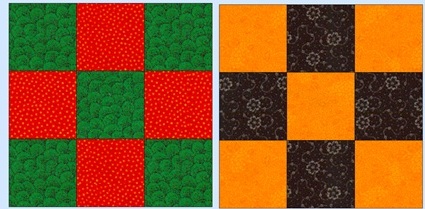 |   Nine-Patch | 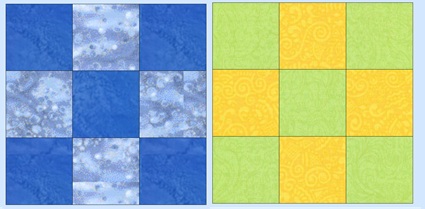 |
To make one 6 1/2 inch nine patch block you need five 2 1/2 inch squares of one color and four 2 1/2 inch squares of a contrasting color. Using a 1/4 inch seam allowance sew a dark blue 2 1/2 inch square on both sides of a yellow 2 1/2 inch square. You need two rows like this for each block. Press the seam allowance to the dark squares. Next sew a yellow 2 1/2 inch square on both sides of a dark blue 2 1/2 inch square. Press the seam allowance to the yellow squares. You need one row for each block. Sew them together as shown using a 1/4 inch seam allowance. Your blocks should measure 6 1/2 inches when you are done making them. They will be 6 inch finished (in the quilt.)
There are a lot more sizes listed at the bottom of the page.
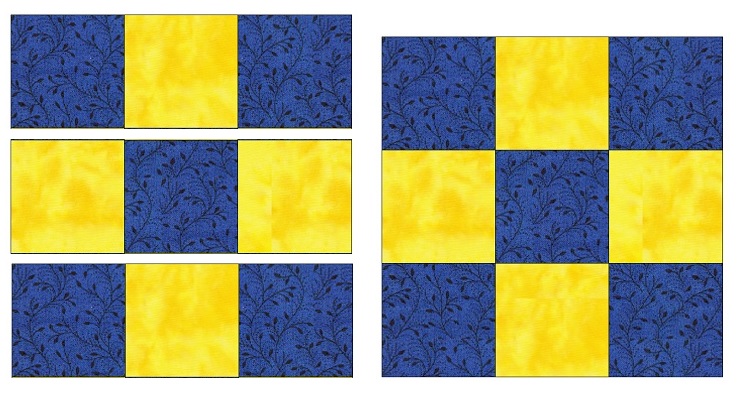

Strip-piecing is a fast, easy method of assembling patchwork blocks for quilting. Using a rotary cutter and a straight rule, you cut long strips of fabric, sew them together, and cut them again to begin forming patterns instead of cutting separate shapes to piece. The nine-patch is not a difficult block, but with this technique you can piece it quickly and have perfect corner-matching.
It's easiest to make nine-patches in "sets". For each set you need four equal length strips of a patterned fabric, and four strips of a contrasting fabric. Try not to use fabrics that match each other, you want the squares to show up against each other and make a pattern.
For a 4 1/2" finished block cut strips 2 inches wide. (Finished means when it is placed into a quilt, the finished size of the block is 4 1/2 inches. Block will measure 5 inches when you measure them before they are sewn into your quilt. This size is called unfinished. ) Cut your strips as long as the fabric will let you, from selvage to selvage.
Begin by arranging your strips in alternate rows. You need to arrange two kinds of rows: one with the light fabric in the center and one with the light fabric on the outside.

Sew your strips together, right sides facing each other. Press the seams flat to set your stitching, and then press the seams toward the dark fabric (or the darker of the two).

When you have sewn and pressed your strips you will have two sections of pieced fabric.
Line up your strips so they are straight (use the lines on your cutting mat) and cut "slices" as wide as you originally cut your strips, in this case two inches. (If you are making a 4 1/2" block with 2 inch strips, cut your sections 2 inches wide.)

Place two units with more dark light fabric on the outsides, and a unit with more light fabric on the inside. Sew these three together to form one block. Alternate the lights and darks, to make a second block.
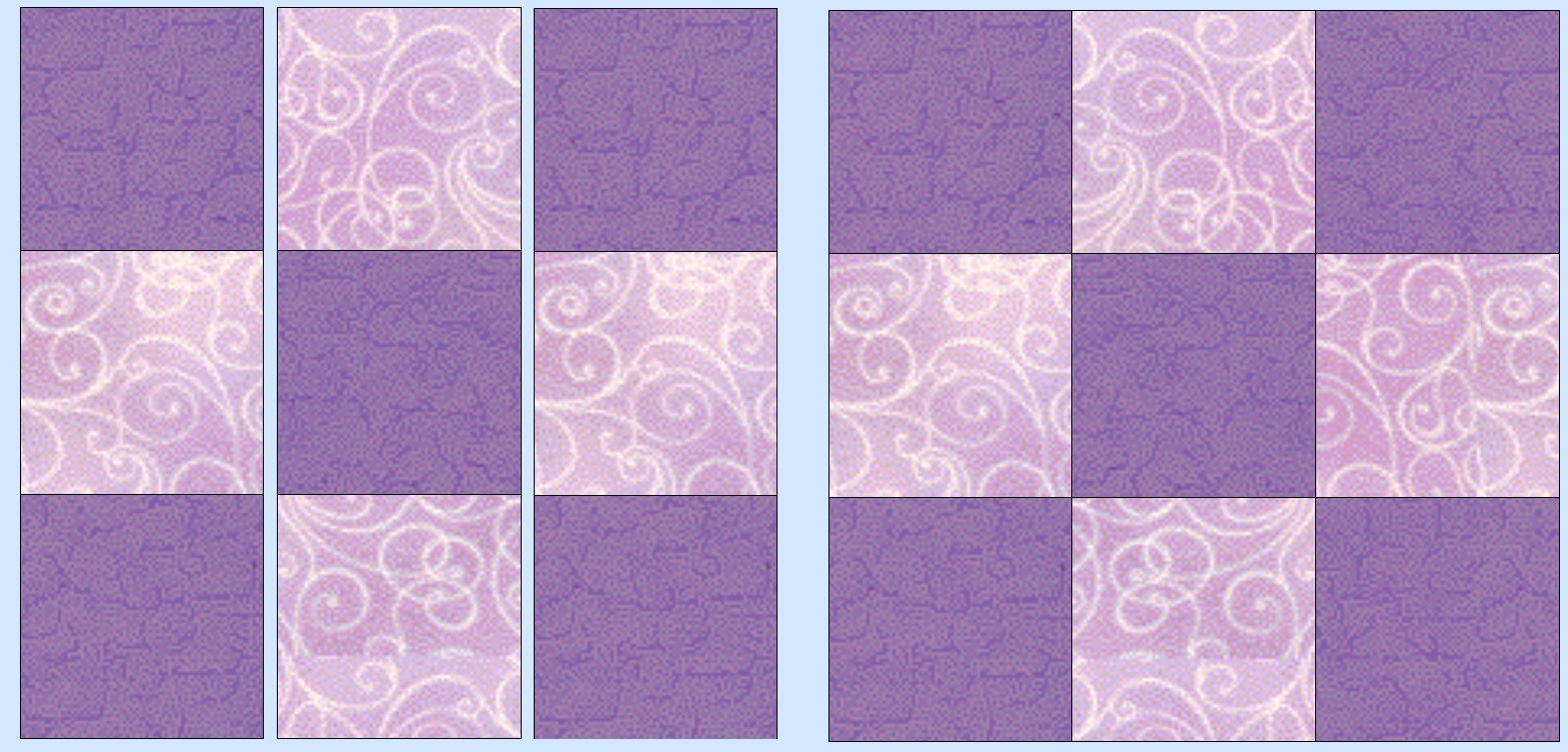
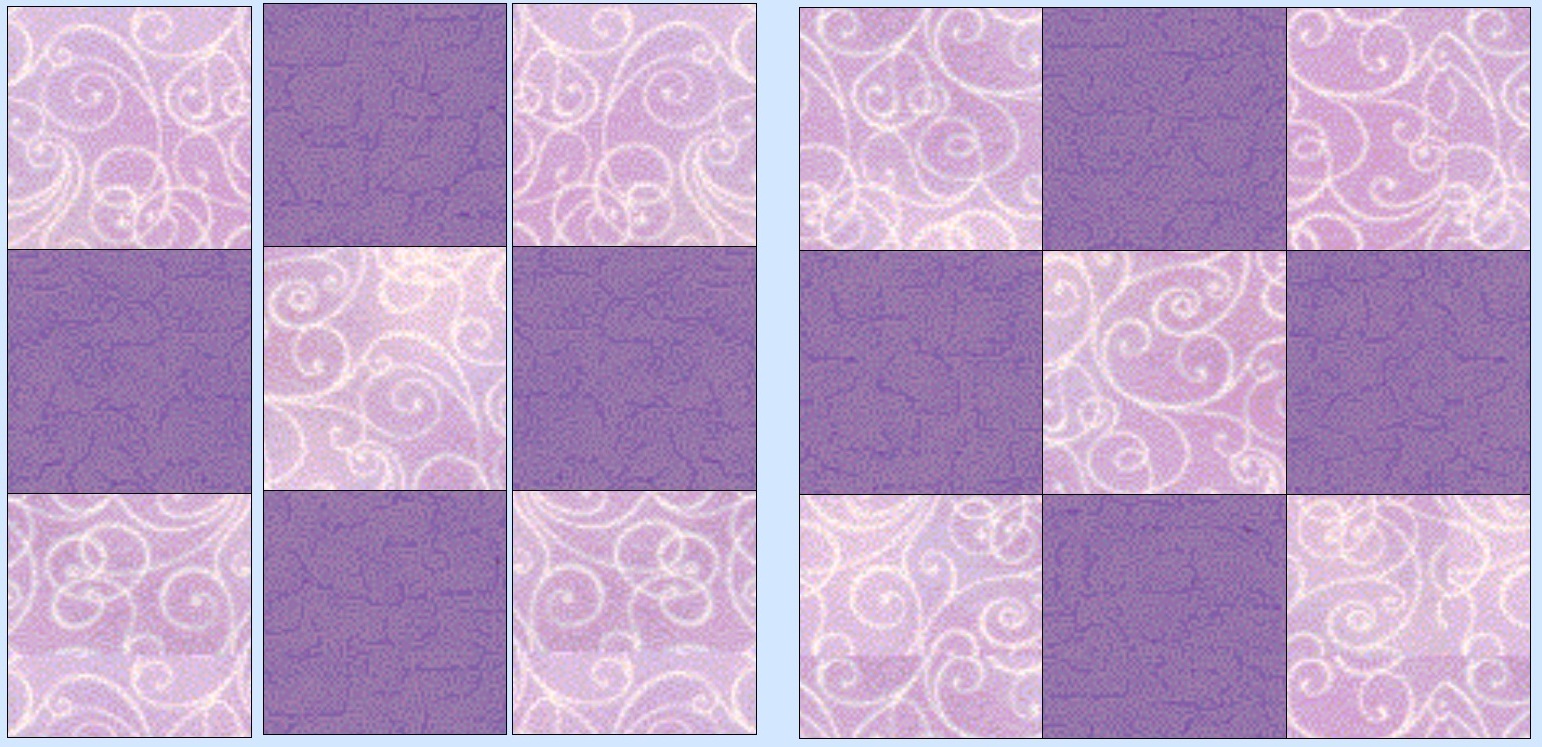
Now that you know how to finish your blocks, you can think about making the quilt. Here are three suggestions for how to finish your nine patch quilt.
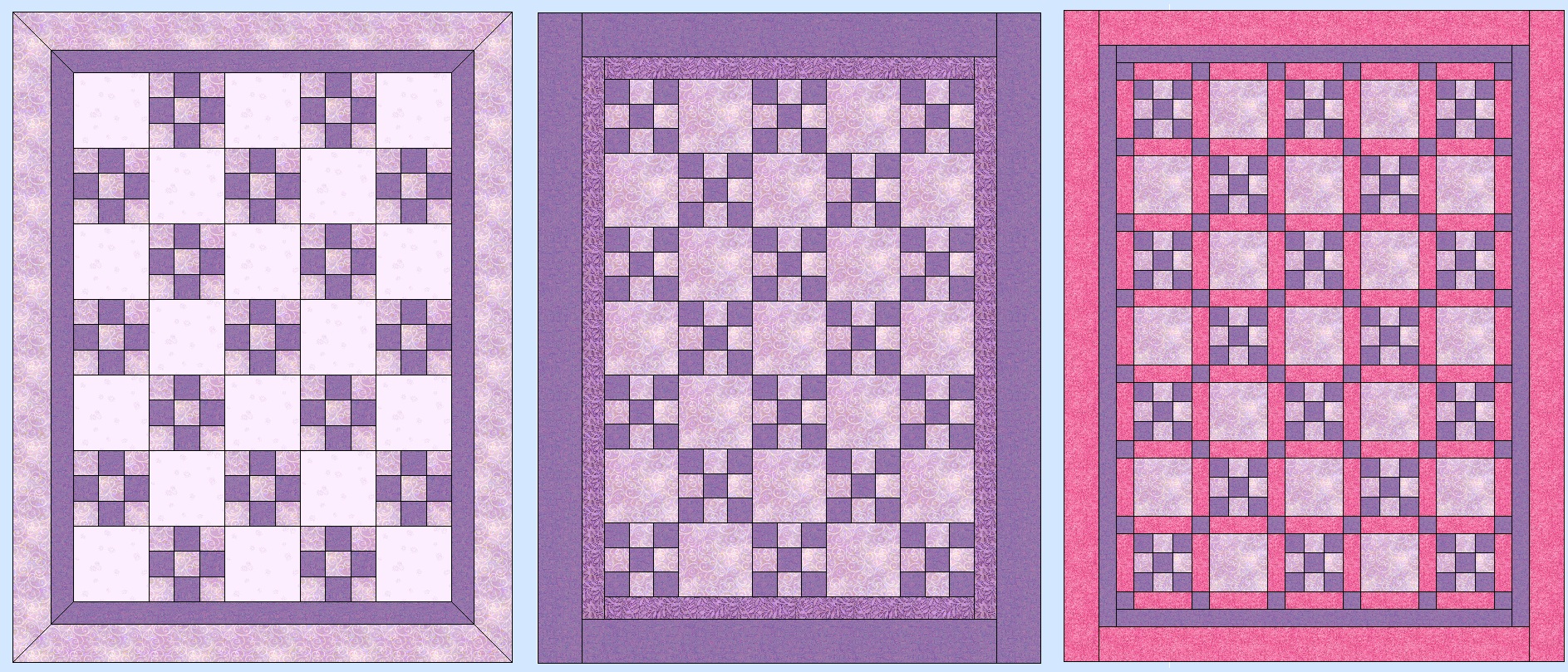
The first quilt is all lighter nine patches, set alternately with a lighter fabric. The inner border is the dark square color and the outer border is the light square color. Size is entirely up to you, it's your quilt. (Those are cut 2 and 3 inches.) The second quilt is all dark squares set alternately with solid blocks of the lighter fabric. The inner border is a new fabric to the quilt and the outer border is the darker fabric in the squares. The third quilt introduces a new color (pink) and sashing with corners. The corners are the dark color in the block, as is the inner border. The blocks are all mostly dark, and the alternating blocks are solid fabric of the lights. The outer border is the pink.
| And nine patch blocks go great with other blocks. Here's a scrappy nine patch and snowball quilt. Nine patches are a great way to use up small scraps! 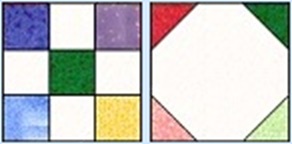 |
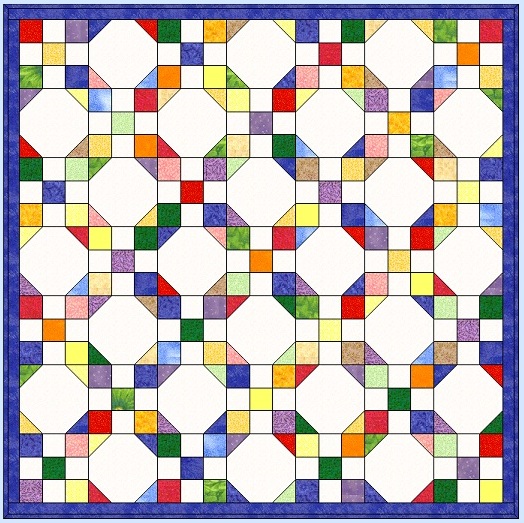 |
Here's a chart to show you what size to cut your squares or strips to make different size nine-patch blocks.
Cutting your squares (or strips) 1 1/2 inches will give you a finished block of 3 inches.
Cutting your squares (or strips) 2 inches will give you a finished block of 4 1/2 inches.
Cutting your squares (or strips) 2 1/2 inches will give you a finished block of 6 inches.
Cutting your squares (or strips) 3 inches will give you a finished block of 7 1/2 inches.
Cutting your squares (or strips) 3 1/2 inches will give you a finished block of 9 inches.
Cutting your squares (or strips) 4 inches will give you a finished block of 10 1/2 inches.
Cutting your squares (or strips) 4 1/2 inches will give you a finished block of 12 inches.
The next two might sound big, but they make great nine patch pillows!
Cutting your squares (or strips) 5 1/2 inches will give you a finished block of 15 inches.
Cutting your squares (or strips) 6 1/2 inches will give you a finished block of 18 inches.
without the owner's permission. This includes the patterns as well as any graphics and/or instructions that are associated with a pattern.
The content on these pages, including text and images are the sole property of the Delaware Quilts and may not be used in any manner without consent. All Rights Reserved.
Updated October 25, 2025
|Home| Quilts| Email|